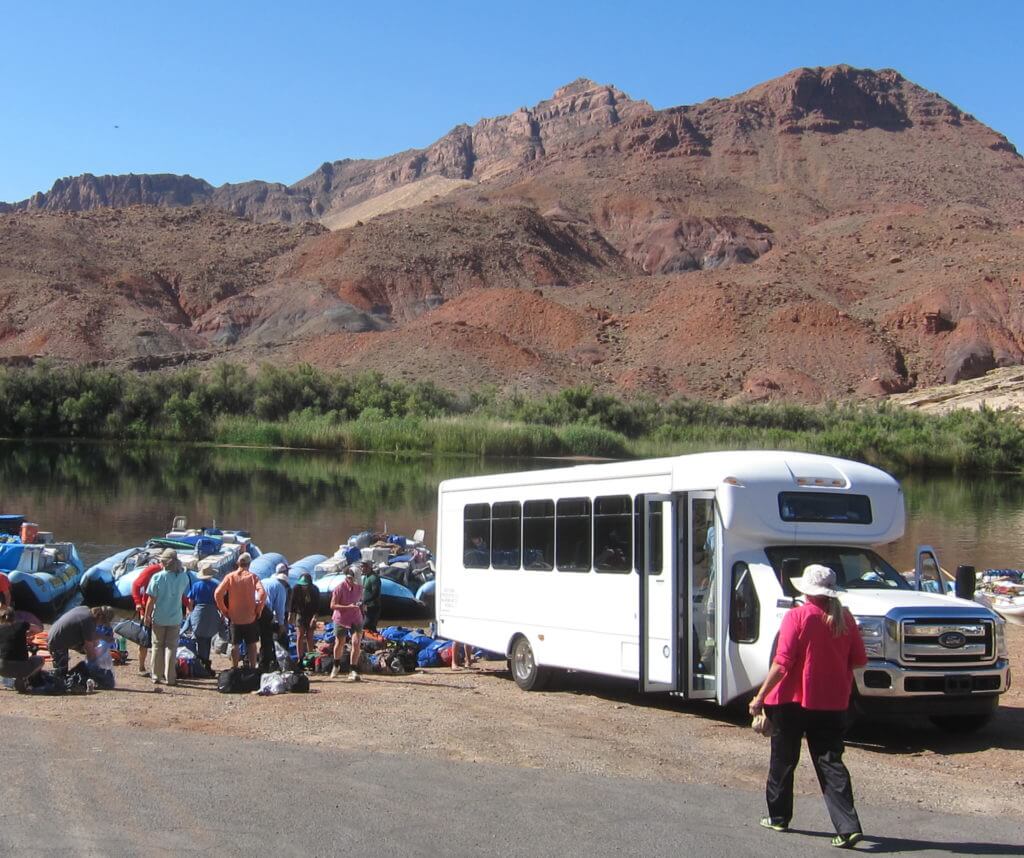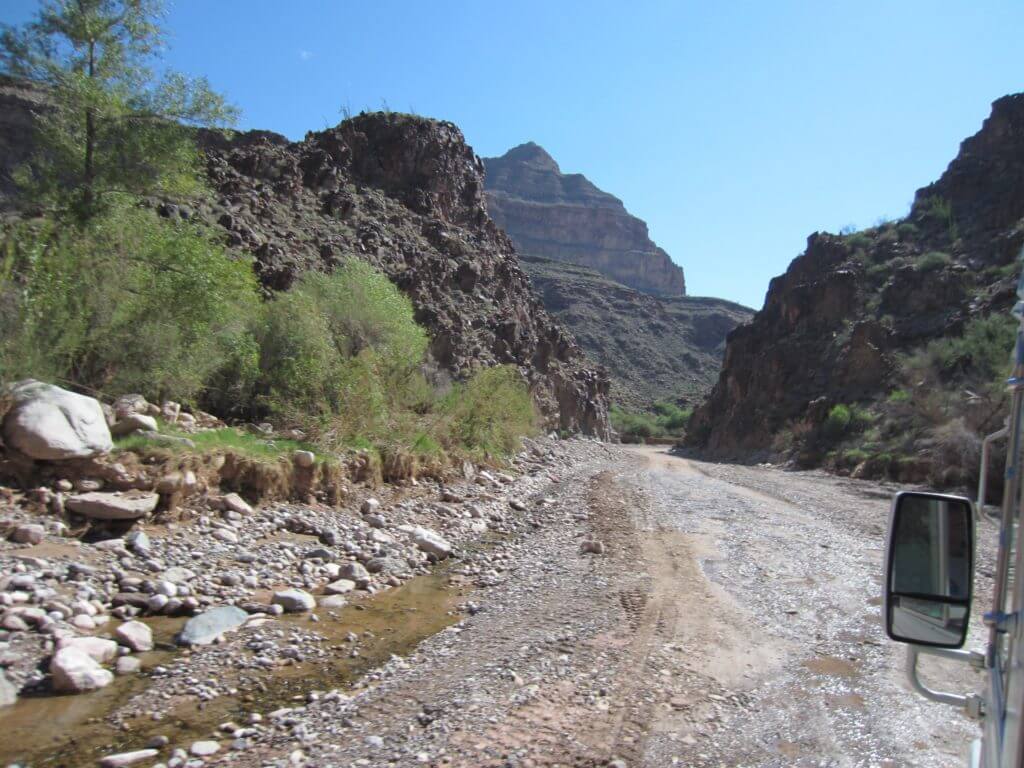We often get this question: if you have to hike into the Grand Canyon to start your river trip, do you have to hike out? The answer is NO, and vice versa — if you hike out of the Canyon, you don’t start with a hike in. Our partial canyon trips only have a mandatory hike one-way, either in or out depending on the trip, but not both.
The simple explanation is that on the other end of your trip, whether upstream or down from your hike, there is a road that goes down to the river. Explaining why or how this works is a little more complicated, but I’ll give it a try …
The Grand Canyon is formed because of UPLIFT — uplift of the Colorado Plateau, that is. The river has, essentially, maintained its same elevation by cutting through the rock as it uplifts around the river. In some places, like our launch point at Lees Ferry, the rock that was exposed because of the uplift was a more easily eroded type, which has eroded away over millions of years to introduce a rare, easily-accessible point on the Colorado River. The next road access point isn’t until Diamond Creek, 225 river miles downstream. At Diamond Creek, a road was graded basically through Diamond Creek stream bed, which flows into the Colorado River, marking the ending of many of our river trips.
(Photos of our put-in and take-out locations below.)
Our boats can only get on the river at Lees Ferry, and they can only get off the river at Diamond Creek, or further downstream at Lake Mead. If you want to get off the river at a point before Diamond Creek, you either have to hike out on Bright Angel Trail or take a helicopter out at mile 187 (Whitmore Wash). If you hike in to a river trip on Bright Angel Trail, the boats will take you down to the take-out point at Diamond Creek.

Passengers getting packed at Lees Ferry launch ramp. The shuttle is able to drive right up to the river.


































